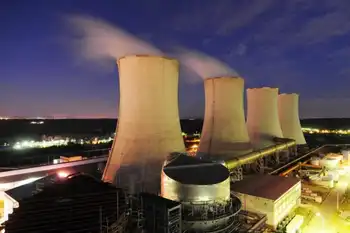Nova Scotia Power smart meter billing raises concerns amid estimated billing, catch-up bills, and COVID-19 meter reading delays, after seniors report doubled electricity usage and higher utility charges despite consistent consumption and on-time payments.
Key Points
Smart meter billing uses digital reads, limits estimates, and may trigger catch-up charges after reading suspensions.
✅ COVID-19 reading pause led to estimated bills and later catch-ups
✅ Smart meters reduce reliance on estimated billing errors
✅ Customers can seek payment plans and bill reviews
A Nova Scotia senior says she couldn't believe her eyes when she opened her most recent power bill.
Gloria Chu was billed $666 -- more than double what she normally pays, and similar spikes such as rising electricity bills in Calgary have drawn attention.
As someone who always pays her bi-monthly Nova Scotia Power bill in full and on time, Chu couldn't believe it.
According to her bill, her electricity usage almost tripled during the month of May, compared to last year, and is even more than it was last winter, and with some utilities exploring seasonal power rates customers may see confusing swings.
She insists she and her husband aren't doing anything differently -- but one thing has changed.
"I have had a problem since they put the smart meter in," said Chu, who lives in Upper Gulf Shore, N.S.
Chu got a big bill right after the meter was installed in January, too. That one was more than $530.
She paid it, but couldn't understand why it was so high.
As for this bill, she says she just can't afford it, especially amid a recently approved 14% rate hike in Nova Scotia.
"That's all of my CPP," Chu said. "Actually, it's more than my CPP."
Chu says a neighbor up the road who also has a smart meter had her bill double, too. In nearby Pugwash, she says some residents have seen an increase of about $20-$30.
Nova Scotia Power had put a pause on installing smart meters because of the COVID-19 pandemic, but it has resumed as of June 1, with the goal of upgrading 500,000 meters by 2021, even as in other provinces customers have faced fees for refusing smart meters during similar rollouts.
In this case, the utility says it's not the meter that's the problem, and notes that in New Brunswick some old meters gave away free electricity even as the pandemic forced Nova Scotia Power to suspend meter readings for two months.
"As a result, every one of our customers in Nova Scotia received an estimated bill," said Jennifer parker, Nova Scotia Power's director of customer care.
The utility estimated Chu's bill at $182 -- less than she normally pays -- so her latest bill is considered a catch-up bill after meter readings resumed last month.
Parker admits how estimates are calculated isn't perfect.
"There would be a lot of customers who probably had a more accurate bill because of the way that we estimate, and that's actually one of things that smart meters will get rid of, is that we won't need to do estimated billing," Parker said.
Chu isn't quite convinced.
"It is pretty smart for the power company, but it's not smart for us," she said with a laugh.
Nova Scotia Power has put a hold on her bill and says it will work with Chu on an affordable solution, though the province cannot order the utility to lower rates which limits what can be offered.
She just hopes to never see a big bill like this again, while elsewhere in Newfoundland and Labrador a lump-sum electricity credit is being provided to help customers.
Related News












